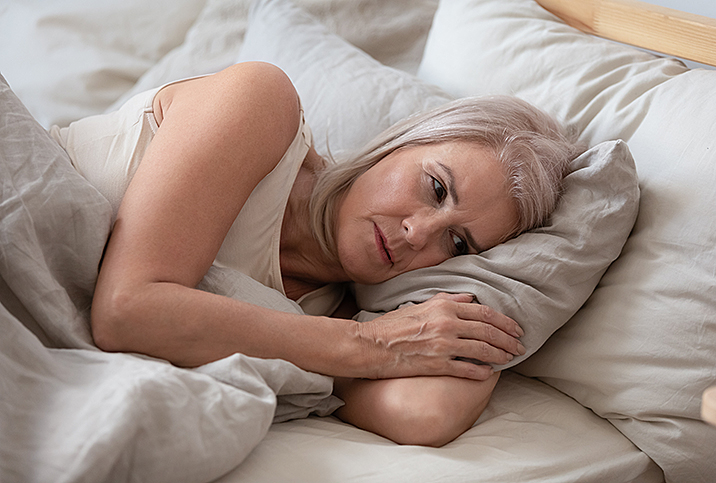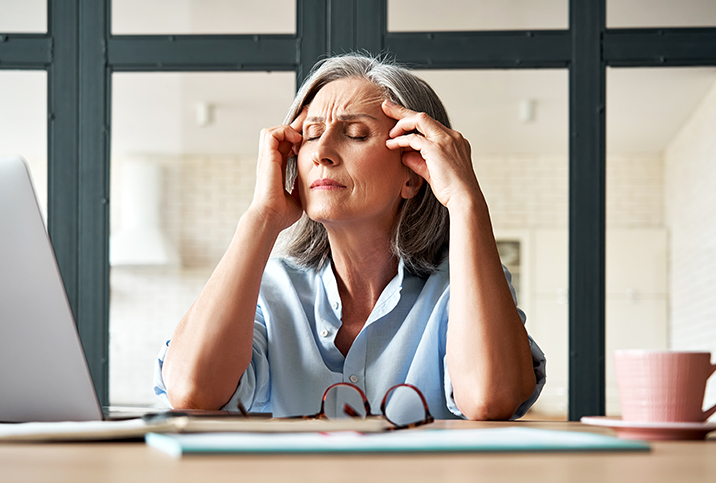Illuminating the Facts About Red Light Therapy for Sexual Health

Red light therapy (RLT) has been used to rejuvenate skin and reduce inflammation for the past 50 years. Dermatologists use this treatment to reduce wrinkles and minimize scarring for their patients, and sports medicine professionals use it to help heal injuries faster in athletes.
Some companies claim the treatment can be used to treat women's sexual health issues, such as vaginal dryness and other pelvic floor issues—but does it work?
The science of red light therapy
"Red light is part of the light spectrum that can penetrate the skin barrier and enter our cells," said Sarah Anderson, N.P., a certified nurse practitioner and CEO and founder of Peak Integrative Wellness in Charlotte, North Carolina.
"By promoting the growth of new cells, red light therapy can speed along the healing process of the skin, muscles, joints and nerve cells," Anderson explained.
'Red light therapy has been documented in clinical trials to improve skin quality, improve anxiety, and may even benefit testosterone production and male fertility.'
Additionally, RLT has been shown to reduce inflammation and swelling, according to a 2013 review in Seminars in Cutaneous Medicine and Surgery.
Various healthcare providers offer RLT treatments, and at-home light therapy devices can be purchased at prices ranging from $500 to thousands of dollars.
In RLT sessions, specific wavelengths of red light (between 600 and 850 nanometers) are held over parts of the body for 10- to 20-minute sessions. Different wavelengths are used for the healing of specific areas, Anderson said.
"The exact mechanism of action of red light therapy is still emerging, but research has shown that it can improve mitochondrial function," said Andrea Paul, M.D., CEO of Illuminate Labs, a supplement company in Northampton, Massachusetts.
As we learned in sixth-grade biology class, the mitochondria are the "powerhouse" of the cell. By stimulating the mitochondria, RLT can help the cells produce more energy. This cellular energy can help repair tissue and improve circulation, according to the 2013 review cited above. It also causes an increase in nitric oxide (NO), which dilates blood vessels and helps improve blood flow, according to a 2017 article published in AIMS Biophysics.
Conditions RLT may be able to treat
Since red light therapy, also known as photobiomodulation, helps improve blood flow and repair tissue, it's possible it could help certain sexual health concerns. However, there has been little research in this area, and most of the benefits for women's health are speculative.
Inflammation, wounds and pain
The best-known use for red light therapy is to treat inflammation, wounds and pain.
"RLT increases blood flow to the area being treated. This helps bring more oxygen and nutrients to the cells and tissues, ultimately leading to faster wound healing and tissue repair," Anderson said.
Since red light therapy can help speed up the healing process after traumatic injuries, there is a theory it could also be used for healing wounds after childbirth.
"There have been a few small studies demonstrating improved wound healing after episiotomy in India, however, one Taiwanese study showed no benefit of RLT after episiotomy. So I think there could be benefits for women who undergo C-section deliveries and wound healing, but there are no studies supporting this," Anderson said.
Red light therapy and menopausal symptoms
As menopause decreases estrogen levels, vaginal dryness and skin laxity or looseness can occur. Since RLT can help with blood flow and collagen production, it's believed it could help improve laxity and vasodilation in the vagina, and there is some evidence to support this belief, according to a 2019 article published in the journal Photobiomodulation, Photomedicine and Laser Surgery.
Proponents of RLT believe it can relieve additional genitourinary symptoms of menopause, including blood flow and restoration of the lamina propria, which would help reduce vaginal dryness and skin fragility.
"There is some early research that red light therapy may treat the symptoms of menopause, but there is much less research on this than the benefits of red light for inflammation and skin," Paul said. "More safety data is needed, but the early research is promising."
Stress urinary incontinence (SUI)
One company that sells at-home RLT devices sponsored a 2017 study published in the International Urogynecology Journal. During the study, women used the device for treating postpartum stress urinary incontinence (SUI) and other sexual health issues.
While the study showed promise, only 55 women were enrolled in the study and only 48 completed the treatment. Of those 48, 79 percent reported subjective improvement in SUI symptoms. So while the device may be beneficial for some women, it's not possible to make concrete conclusions from the study.
Other uses of RLT
The claimed benefits of red light therapy include everything from improving skin quality to helping with seasonal affective disorder to increasing fertility.
"Red light therapy has been documented in clinical trials to improve skin quality, improve anxiety, and may even benefit testosterone production and male fertility, but more research is needed," Paul said.
Photobiomodulation may also have positive effects on endometrial issues, according to a 2018 article published in Lasers in Medical Science. However, there are still not enough data to show it can treat endometriosis or other women's health conditions, Paul noted.
Potential side effects
The Food and Drug Administration (FDA) has not approved any devices for treating symptoms related to menopause or sexual function. The FDA cites risks such as burns, scarring and pain if the power on the device is too high.
"Red light therapy has minimal to no side effects when used properly. Always work with a medical expert to choose a device with safe specs, and use as directed and short term only," Paul advised.
Red light is part of the normal spectrum of light, and we are exposed to red light every day, so the relative risk of therapy is low, Anderson said. She cautioned against misuse of devices, advising to keep RLT devices 8 to 16 inches away from the treatment area and use them only up to 20 minutes to avoid damaging the skin.
Summing it up
While the use of red light therapy has been well documented in the athletic recovery and antiaging skincare spaces, there are insufficient data to confirm any benefits for women's sexual health.
Before visiting a clinic for RLT treatments or spending $500 on an at-home red light therapy device, be aware the alleged benefits are mainly theoretical at this point. The research is still in its early stages, and it will take some time before there is sufficient data on whether RLT is beneficial for women's sexual health.


















